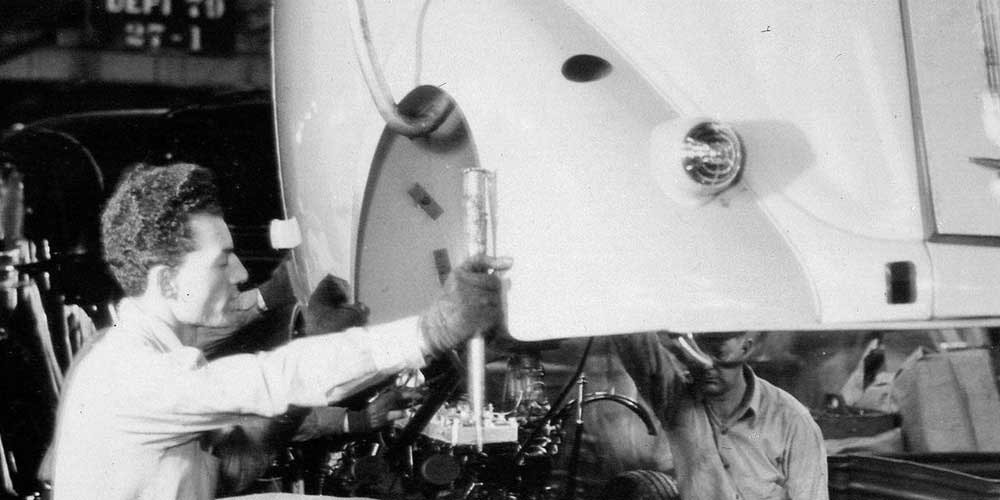By Robert Tate, Automotive Historian and Researcher
Images Courtesy of the National Automobile Museum
Published 7.7.2021
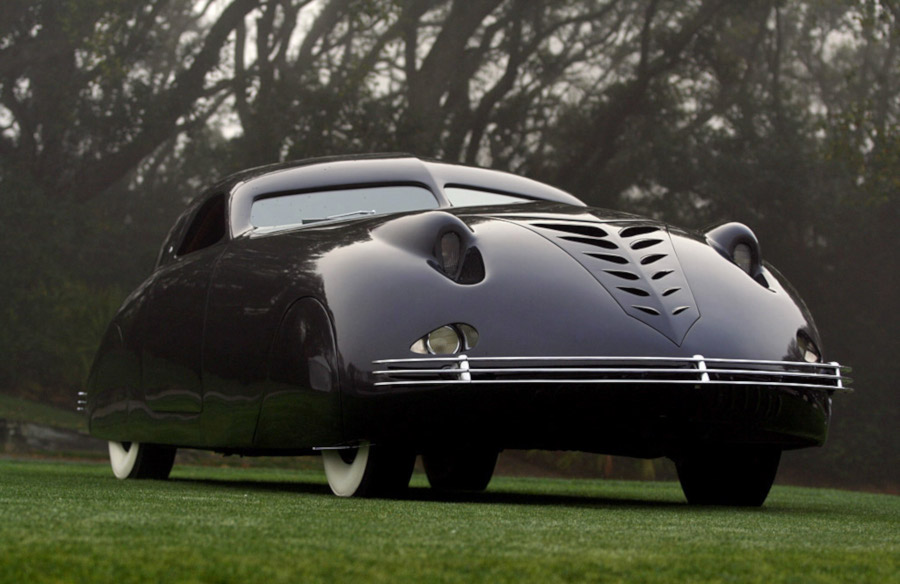 Front end of the Phantom Corsair (National Automobile Museum)
Front end of the Phantom Corsair (National Automobile Museum)
The Phantom Corsair was one of the most unique automotive designs ever when it was introduced to the public in 1938. Some consumers liked it, and some did not. The vehicle is still remembered today as a unique and unusual design that is a part of our automotive history and culture.
 1938 Phantom Corsair illustration (Old Motor)
1938 Phantom Corsair illustration (Old Motor)
The model was designed by Rust Heinz, who once had a dream of what an American supercar should look like. Heinz was from the well-known family that made its fortune selling condiments like ketchup and mustard across the country.
The Phantom Corsair was intended for a limited manufacturing run and would have sold for $15,000 on the consumer market. However, that price was a problem for the Phantom Corsair since it was designed and engineered when most Americans were still struggling with the Great Depression.
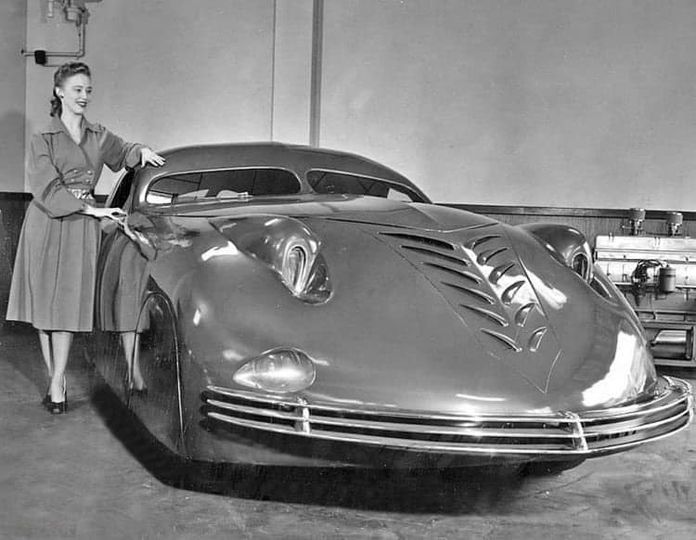 A model poses with the 1938 Phantom Corsair (National Automobile Museum)
A model poses with the 1938 Phantom Corsair (National Automobile Museum)
The Phantom Corsair was a prototype 2-door model sedan. A clay scale model featured an aerodynamic shape that was sleek and futuristic. The model offered room for six passengers. Maurice Schwartz of the Bohman & Schwartz Coachbuilding Company in Pasadena, California was also directly involved in the development of the Phantom Corsair prototype model. The process to build the Phantom Corsair cost approximately $24,000 to create in 1936. Many automotive historians said Heinz had some wind testing done on the model.
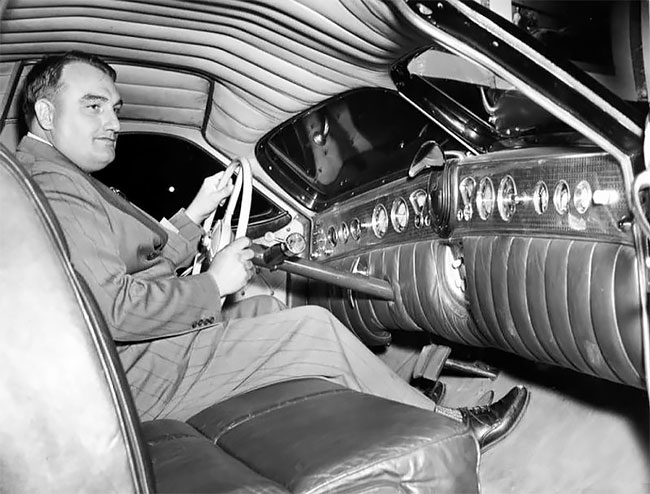 Designer Rust Heinz behind the sheel of the Phantom Corsair (National Automobile Museum)
Designer Rust Heinz behind the sheel of the Phantom Corsair (National Automobile Museum)
Heinz’s parents disapproved in the beginning of his developing the Phantom Corsair. His aunt ultimately agreed to fund the project. Unfortunately, Heinz was killed in an auto accident in July 1939, and the Phantom Corsair project came to an end.
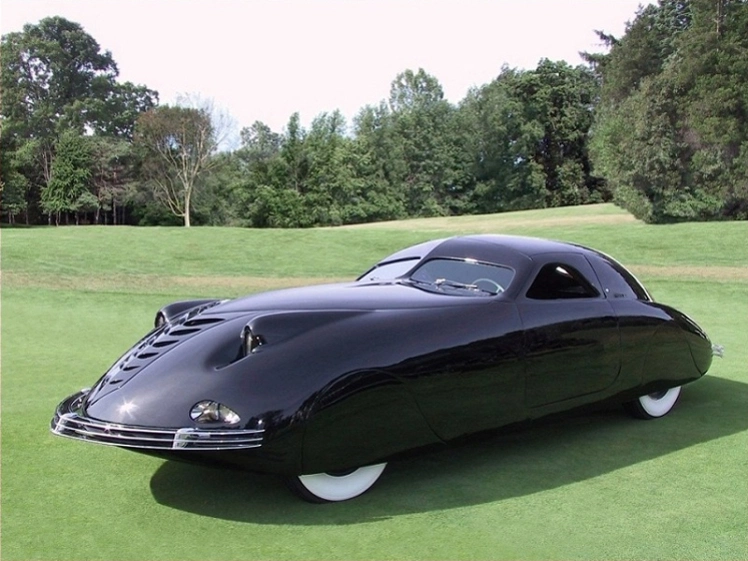 The Phantom Corsair (National Automobile Museum)
The Phantom Corsair (National Automobile Museum)
For many years since, automotive writers and historians have said that “Although sometimes dismissed as a failure because it never entered production, the Corsair is regarded as ahead of its time because of its futuristic features and styling cues such as faired-in fender and a low profile.”
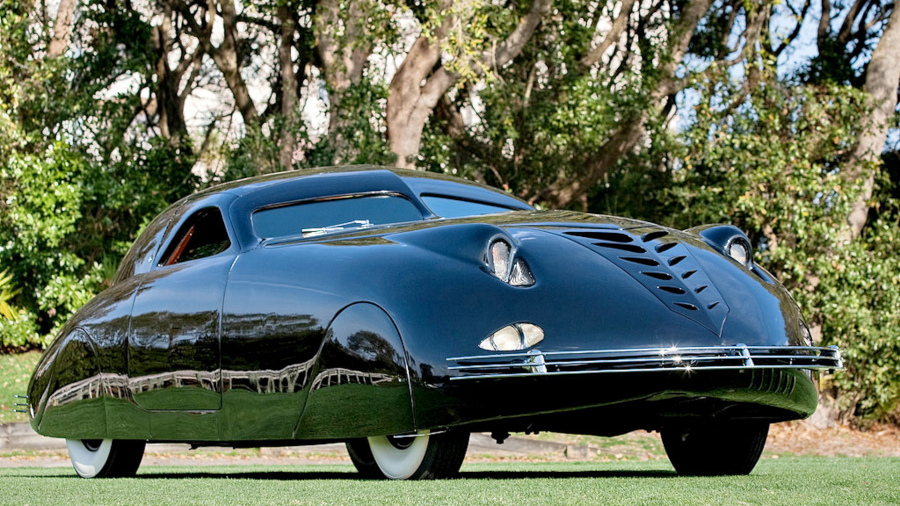 The 1938 Phantom Corsair (National Automobile Museum)
The 1938 Phantom Corsair (National Automobile Museum)
The Phantom Corsair prototype offered an electric push-button door operation, along with green tinted triple-layer safety glass windows, hydraulic impact bumpers, and fog lights for nighttime driving. The instrument panel offered a flush design with a dozen instruments that included a compass and altimeter. The interior offered an aviation design theme with a warning light that signaled when the door was ajar. Other features included a multi-wave radio with twin speakers plus a great air conditioning and heating system. The prototype model used a Cord V8 Lycoming engine with a front wheel drive transmission.
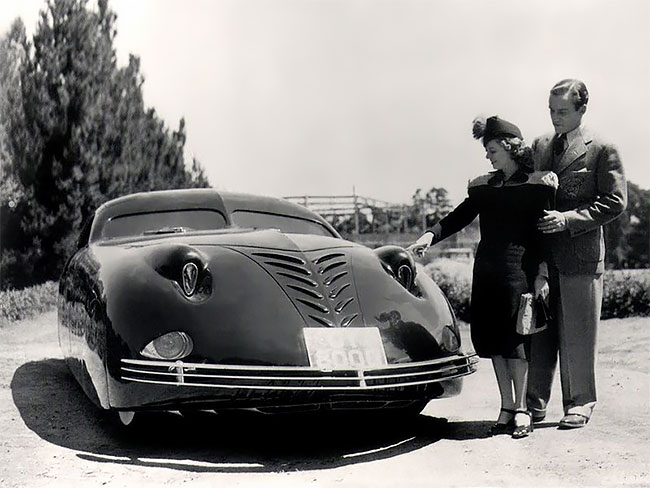 Paulette Goddard and Douglas Fairbanks Jr. with a Phantom Corsair on the set of "Young In Heart" (National Automobile Museum)
Paulette Goddard and Douglas Fairbanks Jr. with a Phantom Corsair on the set of "Young In Heart" (National Automobile Museum)
The Phantom Corsair stood out because of its futuristic look that was different by design, especially for 1938. One problem with the front end design was that it offered a restricted field of vision for the driver which led to safety concerns. One more interesting fact was that the Phantom Corsair featured in the 1938 film “The Young In Heart” starring Paulette Goddard and Douglas Fairbanks Jr.
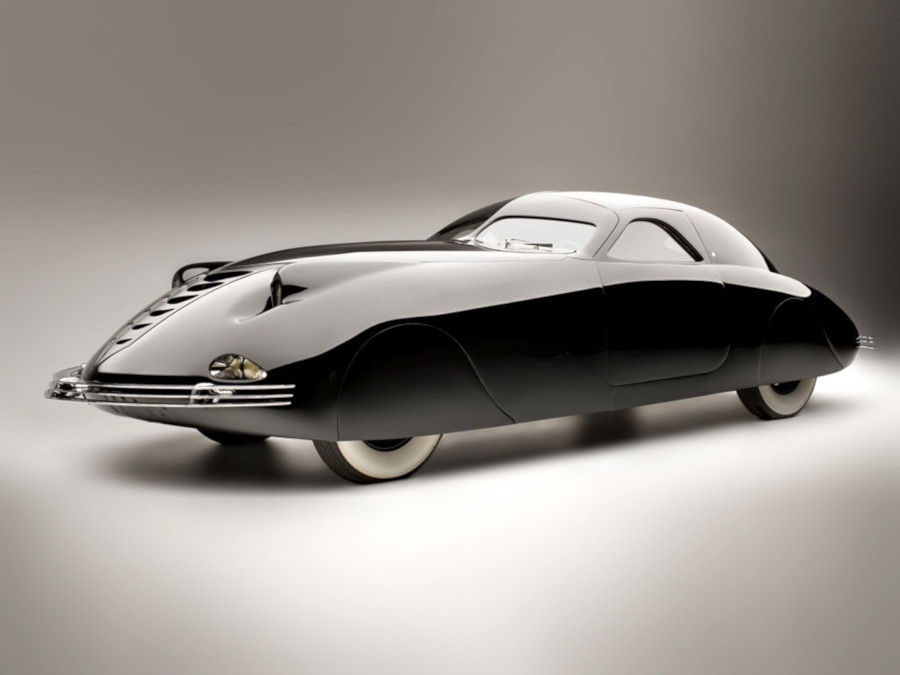 The Phantom Corsair (National Automobile Museum)
The Phantom Corsair (National Automobile Museum)
In conclusion, the model was sold to comedian Herb Shriner in 1951 who later sold it to the Harrah Collection, now called the National Automobile Museum in Reno, Nevada. The Phantom Corsair will always be a part of our automotive history books and was one of the rarest one-off prototype models in the world.
Bibliography
Grigelevieius, Alvaras. “The Phantom Corsair: the Car of Tomorrow from the 1930s.” Dyler.
Walsh, Mick. “The Incredible Story of the Futuristic Phantom Corsair.” Classic Sports Car, June 21, 2013.
Lamm, Michael. “1938 Phantom.” Ironstone Concours d’Elegance - Deans Garage, November 23, 2010.


